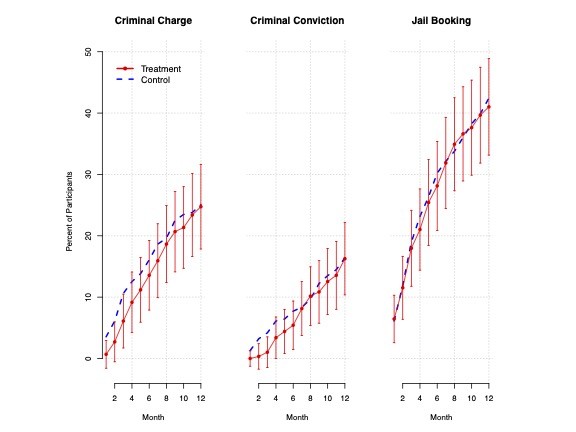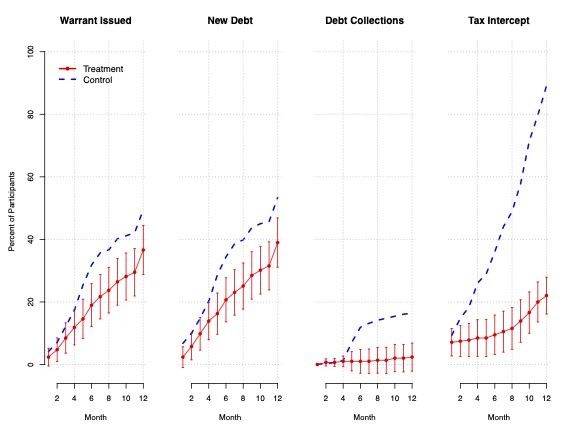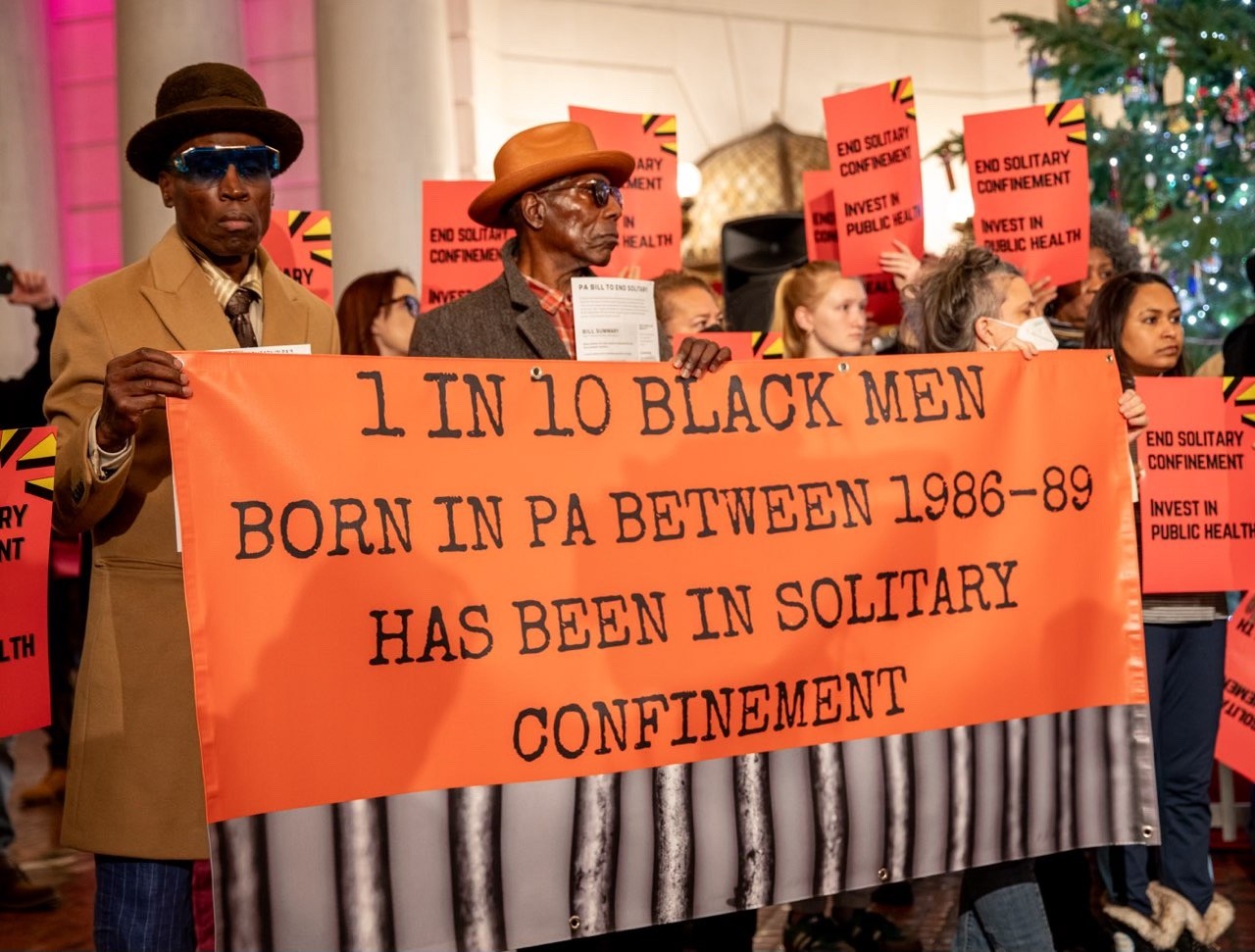Research at the Justice Lab examines the consequences of high incarceration rates, intersections between incarceration and other social problems, conditions of extreme confinement, and how incarceration rates might be reduced to promote public safety and justice.
After a sustained increase in the incarceration rate, the prison and jail population of the United States is now more than seven times higher than in the early 1970s. The growth in incarceration rates was produced by a transformation of sentencing policy and a new emphasis on incapacitation and deterrence as the main purposes of punishment. As incarceration rates have now started to decline slightly, a new conversation has started about alternatives to incarceration and continuing reductions in prison and jail populations.
Our Research
The Rikers Island Longitudinal Study (RILS) is a mixed-methods panel study that followed nearly 300 people facing a new criminal charge in New York City for twelve to eighteen months after their arraignment in 2019-2020. The project seeks to understand how social and economic insecurity, poverty, and other dimensions of inequality shape pre-trial outcomes and experiences, particularly for emerging adults aged 18 to 25.
About RILS
Over eighty percent of New York City’s jail population is detained awaiting trial. Though they make up only about eleven percent of the city’s adult population, emerging adults make up nearly one quarter of the jail population (United States Census). Over ninety percent of the total jail population, including emerging adults, is Black or Latino. By studying the social and economic insecurity of court-involved New Yorkers, this project aims to inform policies that can reduce pretrial detention, a step for closing the Rikers Island Jail Complex and reducing incarceration and racial and economic inequality in New York City.
Focusing on two groups who pose significant challenges for jail diversion – one group charged with violent felonies and another that has been repeatedly incarcerated – the study examines the following questions:
- Why are some defendants detained pre-trial while others are able to avoid the jail?
- How are life conditions of poverty and socioeconomic insecurity connected to crime or criminal justice system contact?
- What supports or interventions might help court-involved New Yorkers complete their pretrial phase in the community without missing court dates or committing new offenses?
Although New York City has a lower jail incarceration rate than most large US cities, jail incarceration is common in the lives of the city’s Black and Latino youth, particularly for those living in poor neighborhoods. Over a quarter of Black men and a sixth of Latino men in New York City, compared to three percent of White men, have been jailed by their 38th birthday. Jail incarceration not only reflects existing racial and economic inequalities but also sustains and deepens inequality by disrupting families, interrupting employment and education, and harming physical and mental health. In examining the relationship between conditions of inequality and criminal legal system contact, RILS aims to help reduce socioeconomic inequality and elevating social integration over punishment and exclusion.
Research Briefs and Reports
The Rikers Island Longitudinal Study: Research Report. Samantha Plummer, Jaclyn Davis. 2024.
Publications
Life During COVID for Court-Involved People. Samantha Plummer, Timothy Ittner, Angie Monreal, Jasmin Sandelson, and Bruce Western. 2023. RSF: The Russell Sage Foundation Journal of the Social Sciences, 9(3):232-251.
The cumulative risk of jail incarceration. Bruce Western, Jacyln Davis, Flavien Ganter, and Natalie Smith. 2021. PNAS: Proceedings of the National Academy of Sciences, 118(16).
Study Instruments
- Baseline Survey
- Baseline Qualitative Interview
- 3-month Survey
- 6-month Survey
- 12-month Survey
- 12-month Survey for Incarcerated Respondents
- COVID Module I
- COVID Module II
Acknowledgements
The RILS was made possible by the hundreds of men and women who shared their time and life experiences so that we may learn about the effects of criminalization and jail incarceration on American families and communities. We thank the New York City Departments of Social Services and of Corrections, the New York Division of Criminal Justice Services, and the New York City Board of Corrections for providing data used in this research. We are grateful to the Mayor’s Office of Criminal Justice for their partnership. This research was supported by grants from the William T. Grant Foundation, the Robert Wood Johnson Foundation, the Russell Sage Foundation, the J.C. Flowers Foundation, and the Tiger Foundation.
The Pennsylvania Solitary Study (PASS) aims to understand how harsh conditions of confinement may affect health and well-being for incarcerated populations, identify the effects of solitary confinement on social and economic outcomes after prison release, and describe the conditions of living and working in high levels of custody in a large U.S. prison system.
About PASS
The PASS began as a unique, mixed-methods interview study of 117 men incarcerated in a solitary confinement unit (called a Restricted Housing Unit or RHU) in a maximum-security prison in Pennsylvania. Men incarcerated in this unit are locked in their cells for 23 hours each day, often for months and sometimes for years at a time. It is a collaborative study led by Bruce Western and Jessica Simes (Boston University), and data collection included a panel survey, qualitative interviews, a neurocognitive test and administrative records on criminal history.
The next phase of the study, currently underway, aims to connect research to policy change through a research-practice partnership with the Pennsylvania Department of Corrections (PADOC). Using detailed administrative prison data provided by PADOC, the research team is working to identify ways to reduce violence in Pennsylvania prisons while eliminating the use of solitary confinement.
Publications
Clustering of Health Burdens in Solitary Confinement: A Mixed-Methods Approach. Jaquelyn L. Jahn, Nicolette Bardele, Jessica T. Simes, and Bruce Western. 2022. SSM - Qualitative Research in Health 2.
Mental Health Disparities in Solitary Confinement. Jessica T. Simes, Bruce Western, and Angela Lee. 2022. Criminology 60(3):538-575.
Solitary Confinement and Institutional Harm. Bruce Western, Jessica T. Simes, and Kendra Bradner. 2022. Incarceration 3(1).
The Population Prevalence of Solitary Confinement. Hannah Pullen-Blasnik, Jessica T. Simes, and Bruce Western. 2021. Science Advances 7(48).
The Legal Debt Study is a field experiment, led by Bruce Western and started with collaborator Devah Pager, of the effect of criminal legal debt relief in Oklahoma County, Oklahoma. The study examines how unpaid criminal legal debt, like the fines, fees, and court costs routinely assessed in criminal courts, affect people's lives and livelihoods. This breakthrough project uses a randomly controlled trial (experiment) to test the causal impact of debt relief.
About Fines and Fees
The study recruited 606 participants convicted of a misdemeanor offense in Oklahoma County between 2017 and 2019. Roughly half were randomly selected to receive the "treatment", which meant that the research team paid a flat rate to eliminate all of their outstanding legal debt to Oklahoma County as well as all fees and costs associated with their current misdemeanor case. The control group are the participants who did not receive debt relief. All participants still needed to complete the other conditions of their sentence, such as probation supervision, jail time, and community service. Because debt relief was randomly assigned while all other sentencing conditions stayed the same, the research team is able to identify which consequences are caused by legal debt when they compare outcomes between treatment and control groups.
The study team conducted follow-up interviews one year after treatment randomization and collected administrative court record and jail booking data for a total of 4 years after randomization to understand the effects of legal debt on criminal justice, economic, health, housing, and other outcomes important for wellbeing.
Results on the effect of legal debt for criminal justice outcomes one year after randomization show that fines and fees have no deterrent effect on crime, but they do lead to more arrest warrants and other court actions related to debt collection, amounting to a criminalization of poverty. These findings have been published in the American Sociological Review, and publicized by the Fines and Fees Justice Center and the Institute for Research on Poverty at the University of Wisconsin - Madison.


Currently, the research team is analyzing the criminal justice data to identify treatment effects up to four years after randomization and using the one-year followup interviews to understand the effects of legal debt on outcomes related to personal wellbeing, such as employment, health, housing, and family relationships.
About 600,000 people are released from state and federal prison each year, returning overwhelmingly to neighborhoods of concentrated disadvantage. The Reentry Studies —the Boston Reentry Study and New York Reentry Study — are tailored to studying the process of transition from prison to community of a hard-to-reach population under contemporary conditions of mass incarceration. These studies provide substantive insight into the lives of the formerly-incarcerated men and women as they adjust to living in free society after incarceration. Through a series of interviews and administrative records, the studies capture the effects of incarceration through a variety indicators, including residential mobility, housing security, relations with family and children, peer networks, earnings and job seeking, and health status and use of health services.
About Reentry
Boston Reentry Study
The Boston Reentry Study (BRS) is a mixed-methods, longitudinal study of 122 men and women released from Massachusetts state prisons to the Boston area. It is a collaborative study led by Bruce Western, Anthony Braga (Northeastern), and Rhiana Kohl (MA DOC) focusing on the transition into the community during their first year after prison release. The data collection combined a panel survey, qualitative interviews, interviews with family members, and administrative records on criminal history. The BRS traces the complexity of integration after incarceration and draws from their life histories, including childhood experiences, to understand how individual biographies shape their transition into the community. Remarkably, over the one year of follow up, the BRS sustained an unparalleled response rate of 94 percent. To learn more about the Boston Reentry Study, click here.
New York Reentry Study
The New York Reentry Study (NYRS), led by Bruce Western, is a longitudinal panel survey of 33 men who were released from incarceration on Rikers Island Jails. The series of five semi-structured interviews focus on the topics of housing, employment, health, community membership, and criminal justice system contact. The unique study design of NYRS also incorporates interviews with up to three people in each respondent's network to better understand the impact of incarceration and reentry on families. By combining data gathered directly from respondents and their closest kin with administrative records, the NYRS aims to provide new insights into the process of reentry for men and their families across New York City.
Northern Territory Reentry Study
The Northern Territory Reentry Study (NTRS) interviews formerly incarcerated indigenous Australians who participated in the Northern Australian Aboriginal Justice Agency Throughcare Program. The NTRS is currently in the write-up phase and was funded by the Ford Foundation and Harvard University.
Funding for reentry has been provided by the Russell Sage Foundation, the Ford Foundation, the National Institutes of Health, the National Science Foundation, the University of Queensland, and the Radcliffe Institute for Advanced Study.
Publications
Homeward: Life in the Year After Prison. Bruce Western. New York: Russell Sage Foundation.
A Longitudinal Survey of Newly-Released Prisoners: Methods and Design of the Boston Reentry Study. Bruce Western, Anthony Braga, and Rhiana Kohl. 2017. Federal Probation, 81(1):32-40.
Study Retention as Bias Reduction in a Hard-to-Reach Population. Bruce Western, Anthony Braga, David Hureau, and Catherine Sirois. 2016. Proceedings of the National Academy of Sciences, 113(20):5477-5485.
Stress and Hardship After Prison. Bruce Western, Anthony Braga, Jaclyn Davis, and Catherine Sirois. 2015. American Journal of Sociology, 120(5):1512-1547.
Lifetimes of Violence in a Sample of Released Prisoners. Bruce Western. 2015. RSF: The Russell Sage Foundation Journal of the Social Sciences, 1(2):14-30.
Resources
Neighborhood Attainment After Prison. Jessica Simes. 2016.
Formerly Incarcerated Parents and their Children. Bruce Western and Natalie Smith. 2017.
Racial Inequality in Employment and Earnings after Incarceration. Bruce Western and Catherine Sirois. 2017.
Additional Research
The history of the U.S. criminal justice system is marked by racial inequality and sustained by present day policy. Large racial and ethnic disparities exist across the several stages of criminal legal processing, including in arrests, pre-trial detention, and sentencing and incarceration, among others, with Black, Latino, and Native Americans experiencing worse outcomes. The historical legacy of racial exclusion and structural inequalities form the social context for racial inequalities in crime and criminal justice. Racial inequality can drive disparities in crime, victimization, and system involvement.
Reducing Racial Inequality in Crime and Justice. National Academies of Sciences, Engineering, and Medicine; Division of Behavioral and Social Sciences and Education; Committee on Law and Justice; Committee on Reducing Racial Inequalities in the Criminal Justice System; Bruce Western, Khalil Gibran Muhammad, Yamrot Negussie, and Emily Backes. 2023.
The conditions and characteristics of correctional facilities - overcrowded with rapid population turnover, often in old and poorly ventilated structures, a spatially concentrated pattern of releases and admissions in low-income communities of color, and a health care system that is siloed from community public health - accelerates transmission of the novel coronavirus (SARS-CoV-2) responsible for COVID-19. Such conditions increase the risk of coming into contact with the virus for incarcerated people, correctional staff, and their families and communities. Relative to the general public, moreover, incarcerated individuals have a higher prevalence of chronic health conditions such as asthma, hypertension, and cardiovascular disease, making them susceptible to complications should they become infected. Indeed, cumulative COVID-19 case rates among incarcerated people and correctional staff have grown steadily higher than case rates in the general population.
Decarcerating Correctional Facilities during COVID-19. National Academies of Sciences, Engineering, and Medicine; Division of Behavioral and Social Sciences and Education; Committee on Law and Justice; Committee on the Best Practices for Implementing Decarceration as a Strategy to Mitigate the Spread of COVID-19 in Correctional Facilities; Emily A. Wang, Bruce Western, Emily P. Backes, and Julie Schuck. 2020.
Prepared by committee chair Jeremy Travis, vice-chair Bruce Western, and an interdisciplinary committee of leading scholars, the National Research Council report, The Growth of Incarceration in the United States: Exploring Causes and Consequences, provides the first comprehensive assessment of research on how we got to such a high incarceration rate and its impact on the population. The report recommends that incarceration rates be significantly reduced, that prison conditions be closely monitored to ensure the rights and dignity of those incarcerated, and that social policy be buttressed to adjust to community needs in a climate of reduced prison populations.
The Growth of Incarceration in the United States: Exploring Causes and Consequences. Jeremy Travis, Bruce Western, and Steve Redburn. 2014.
